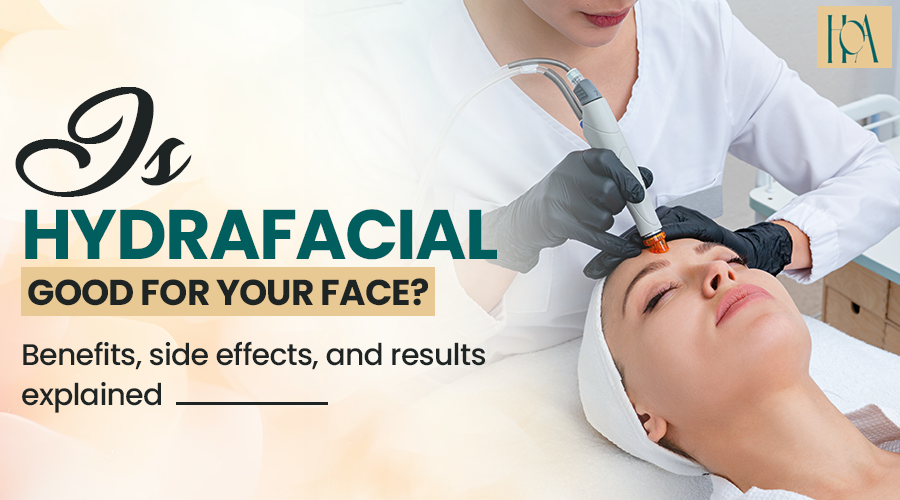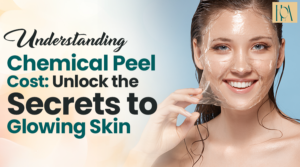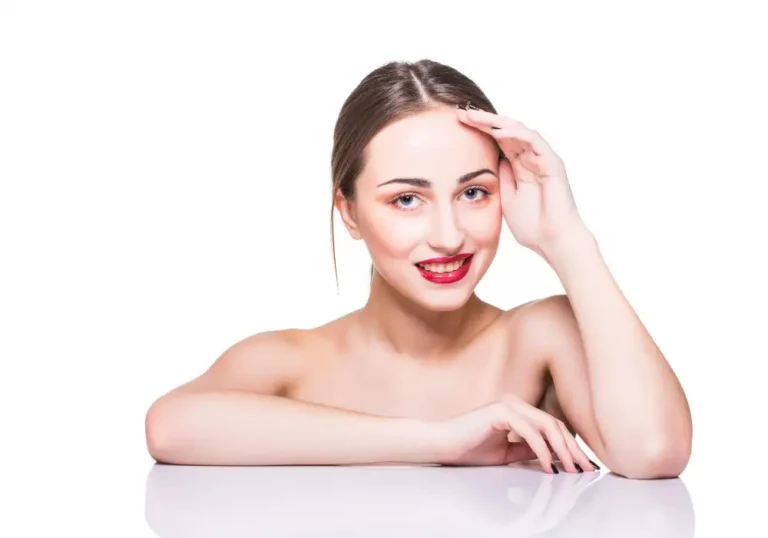Hydrafacial is a skincare treatment that leaves the skin looking glowy and radiant by deeply cleansing the face. It is gaining popularity among skin enthusiasts and is one of the most recommended facials by dermatologists. Many celebrities opt for it too. But is all the hype surrounding Hydrafacial really worth it? Is hydrafacial good for your face in the long run? Let’s find out.
If you’ve ever wished for glowing, smooth, and refreshed skin without the harshness of traditional facials, you’ve probably come across Hydrafacial. Known for its gentle yet effective multi-step process, Hydrafacial has become a go-to for people looking to rejuvenate their skin before events, weddings, or as part of their skincare routine.
Is hydrafacial good for your face if you have sensitive skin or acne issues? We’ll explore the answer by diving into the treatment, its benefits, and its widespread appeal.
Hydrafacial:-
Hydrafacial is basically a non-invasive skin treatment that is performed by a well-trained dermatologist using a patented device. It makes use of face cleansing, skin exfoliation, extraction, hydration, and skin protection by antioxidant treatment. Hydrafacial machines use a vortex-like suction mechanism to clear the skin pores and also simultaneously infuse skin with beneficial serums, namely hyaluronic acid, peptides, and antioxidants.
The three main steps of HydraFacial include –
- Cleanse and Peel – It is inclusive of gentle skin exfoliation to remove the dead skin cells.
- Extract and Hydrate – A painless suction removes debris from pores, followed by intense hydration.
- Fuse and Protect – Skin is saturated with antioxidants and peptides to enhance glow and protect the barrier.
Also Read:- Best Hydra Facial in South Delhi
Benefits of Hydrafacial for the Face:-
Is hydrafacial good for your face when it comes to tackling multiple skin issues? Absolutely. Here are some of the most cited HydrFacial benefits:
(1) Instant radiant glow – The hydration boost and exfoliation leave skin instantly brighter and smoother.
(2) Deep face cleansing – The usage of the vacuum suction mechanism in hydrafacials helps in unclogging the skin pores and deeply cleanses the skin, unlikely to cause pain or redness as experienced by manual extraction of impurities.
(3) Skin’s deeper hydration – The infusion of hyaluronic acid-based serum into the skin during hydrafacial renders the skin plump and moisturised for longer days after the treatment is taken.
(4) Evening out skin tone and texture – Mild exfoliation with glycolic and salicylic acids can help reduce dullness, sunspots, and uneven skin tone.
(5) Personalised touch – Serums can be tailored based on your skin needs—whether it’s anti-aging, acne control, or pigmentation.
(6) Minimum downtime required – You can return to your normal routine immediately after, with glowing skin that looks healthier and refreshed.
Also Read:- How Long Will Hydrafacial Results Last?
Skin Issues That Hydrafacial Can Help With:-
Is hydrafacial good for your face if you suffer from common skin concerns? It can help with:
- Acne and clogged pores
- Fine lines and wrinkles
- Hyperpigmentation
- Oily or congested skin
- Uneven tone
- Dehydrated or dull skin
- Mild rosacea (in most cases)
However, it’s important to note that while HydraFacial can improve appearance and texture, it’s not a cure for chronic skin conditions and may need to be paired with targeted treatments or prescriptions.
Also Read:- Hydra Facial Treatment Procedure
Hydrafacial’s Suitability for Different Skin Types:-
Is hydrafacial good for your face, regardless of your skin type? Yes, and that’s a major advantage. It is safe and effective for:
- Sensitive skin
- Acne-prone skin
- Dry or dehydrated skin
- Mature or aging skin
Because the treatment can be customized—using gentler acids or skipping certain steps—most people can enjoy HydraFacial without fear of irritation. However, individuals with active rashes, sunburns, or severe rosacea should consult a dermatologist before proceeding.
Side Effects of Hydrafacial:-
Hydrafacial is generally well tolerated, but minor side effects can include:
- Temporary redness (usually resolves within an hour)
- Mild tightness or sensitivity
- Temporary acne breakouts
- Rare allergic reactions
Tip: Always inform your provider of allergies or sensitivities to avoid side effects.
Changes observed after hydrafacial –
Before Hydrafacial –
Skin may appear dull, tired, congested, or dry. Pores might be visible, and skin texture uneven.
After Hydrafacial –
Post-treatment, the face looks noticeably brighter, smoother, and more hydrated. Pores appear smaller, and makeup applies more evenly. Most people report a “glass skin” effect that lasts several days.
With regular sessions—usually once a month—many users notice improved texture, reduced breakouts, and an overall glow.
Expert Dermatologist Opinions
According to Dr. Neha Khurana, “Hydrafacial is a non-invasive yet powerful facial that suits almost all skin types and helps reduce dullness and pigmentation. For acne or open pores, the extraction step works effectively without trauma.”
Most experts agree it’s not a substitute for prescription treatments, but it is excellent for skin maintenance.
Conclusion
So, is a hydrafacial good for your face? With its deep cleansing, hydration, and glow-enhancing effects, combined with almost no downtime, the answer is yes for most individuals.
Hydrafacial is one of the most loved and reputed derma facials, especially among celebrities and dermatologists like Dr. Neha Khurana ( One of the Best Dermatologist in South Delhi) at the House of Aesthetics, because of its customizability and efficacy. If you’re prepping for a big event or need a skin refresh, visit a certified dermatologist to experience amazing results. While not a miracle cure, it delivers on its promise of cleaner, brighter, and hydrated skin in just 30–45 minutes.
The final word? If you’re wondering, “Is hydrafacial good for your face?”—the repeated endorsements and visible transformations at the House of Aesthetics by experts like Dr. Neha Khurana make a compelling case that it is.
FAQ
- What should be the frequency of getting Hydrafacial done?
Once every 4–6 weeks is ideal for maintenance. If you’re treating acne or pigmentation, your dermatologist may recommend more frequent sessions initially.
- Is HydraFacial painful?
No, it’s a painless procedure, and many describe it as relaxing. There might be a mild tingling or suction sensation.
- Is it suitable to apply makeup after getting a Hydrafacial done?
Yes, but it’s best to let your skin breathe for the rest of the day post-treatment.
- Is Hydrafacial superior to regular salon facials?
It’s more targeted and medical-grade, offering deeper cleansing and hydration than traditional spa facials.
- Can you opt for Hydrafacial if you have acne trouble?
Yes, it helps by unclogging pores, reducing inflammation, and infusing calming, acne-fighting serums. But for severe acne, combine it with a dermatologist’s treatment plan.





